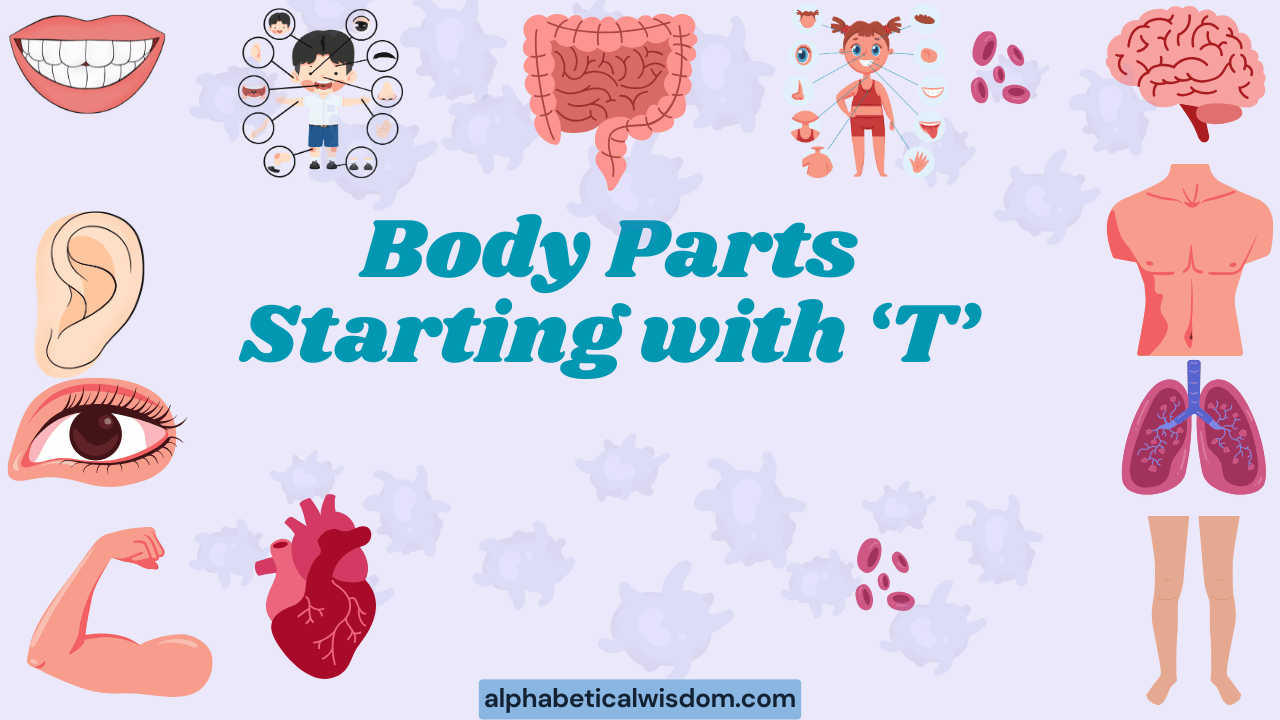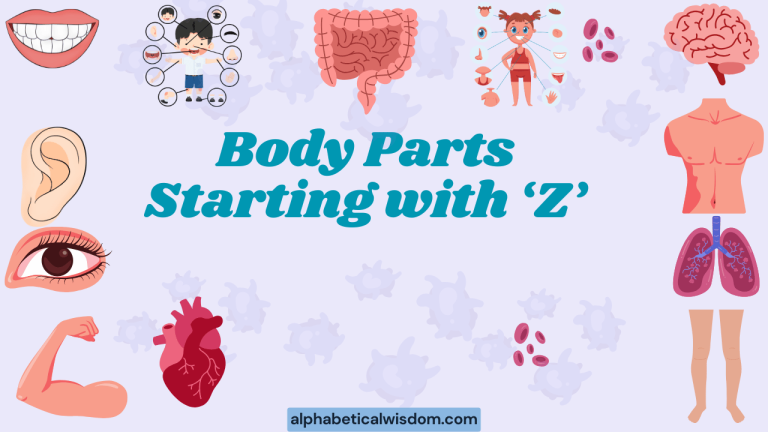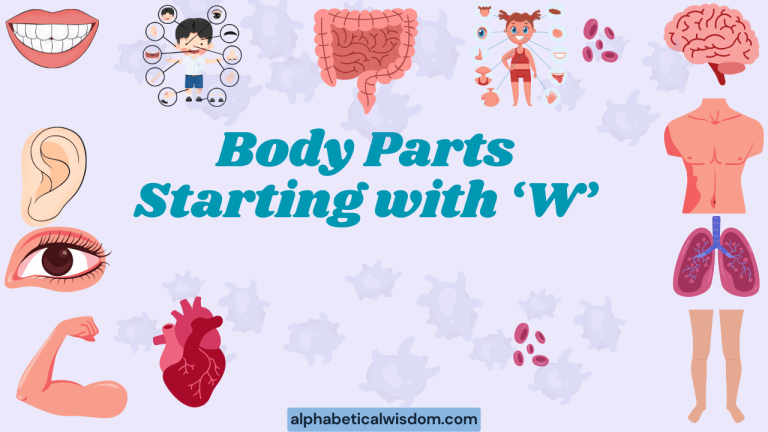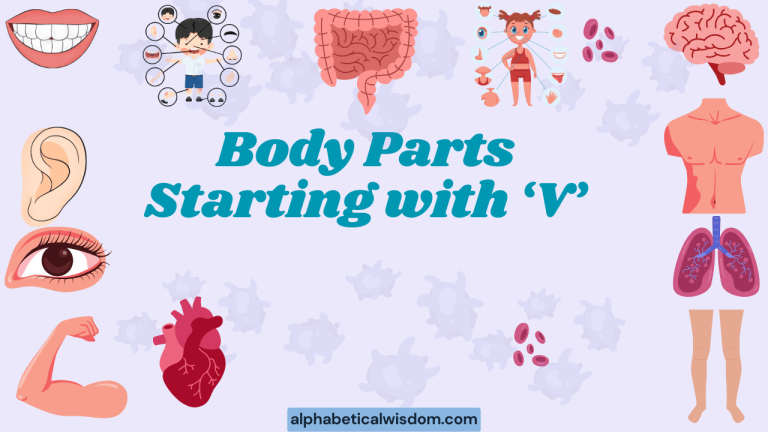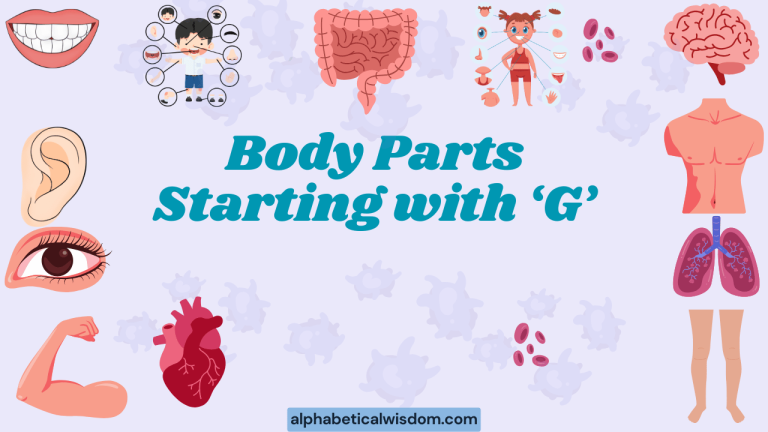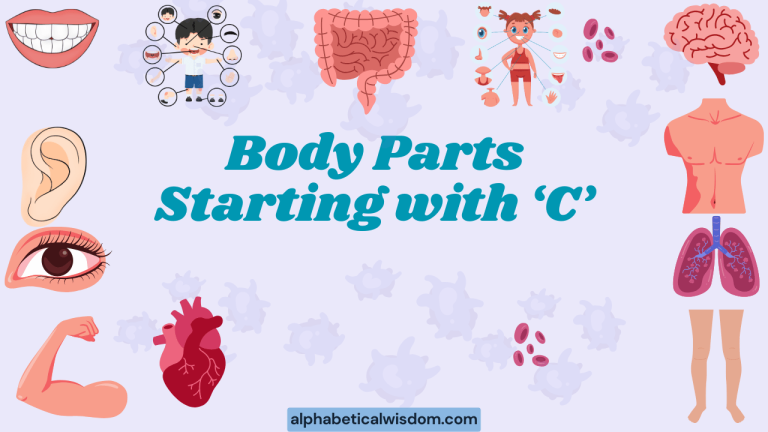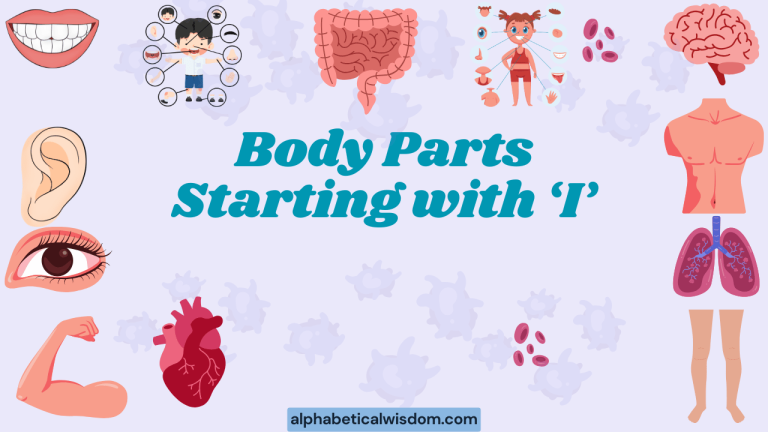Mastering Body Parts: A Grammar Guide to Terms Starting with ‘T’
Understanding the vocabulary related to body parts is crucial for effective communication in English. This article focuses specifically on body parts that begin with the letter ‘T’, exploring their anatomical definitions, grammatical usage, and common idiomatic expressions.
Whether you’re an ESL learner, a medical student, or simply looking to expand your vocabulary, this guide will provide a comprehensive overview of these terms, ensuring accuracy and fluency in your language skills. From basic anatomical terms to more complex expressions, we’ll cover everything you need to know.
Table of Contents
- Introduction
- Definitions of Body Parts Starting with ‘T’
- Structural Breakdown: Singular vs. Plural
- Types and Categories of ‘T’ Body Parts
- Examples of Body Parts Starting with ‘T’ in Sentences
- Usage Rules: Articles and Possessives
- Common Mistakes and How to Avoid Them
- Practice Exercises
- Advanced Topics: Idioms and Figurative Language
- Frequently Asked Questions
- Conclusion
Definitions of Body Parts Starting with ‘T’
This section provides a comprehensive overview of body parts starting with the letter ‘T’. Understanding these terms is essential for clear and accurate communication, especially in medical and health-related contexts.
We’ll cover both the anatomical definitions and the common usage of each term.
Toe
A toe is one of the five digits on each foot of a human or other mammal. Each toe consists of one or more bones called phalanges, surrounded by soft tissue. The big toe, or hallux, typically has two phalanges, while the other toes have three. Toes are essential for balance, walking, and running.
Tongue
The tongue is a muscular organ in the mouth. It plays a vital role in taste, speech, chewing, and swallowing. The surface of the tongue is covered with taste buds, which allow us to perceive different flavors. The tongue also helps to manipulate food in the mouth and form words during speech.
Tooth (Teeth)
A tooth (plural: teeth) is a hard, enamel-coated structure in the mouth used for biting and chewing food. Humans typically have 32 teeth, including incisors, canines, premolars, and molars. Teeth are essential for the initial stage of digestion and contribute to clear speech.
Trachea
The trachea, also known as the windpipe, is a tube that connects the larynx (voice box) to the bronchi of the lungs, allowing the passage of air to the lungs. It is composed of cartilaginous rings, which maintain its shape and prevent it from collapsing during breathing.
Thumb
The thumb is the short, thick digit on the hand, distinguished from the other fingers by its opposability. This unique feature allows humans to grasp and manipulate objects with precision. The thumb plays a critical role in fine motor skills and hand dexterity.
Temple
The temple is the flat area on each side of the head behind the eye and forehead. It overlies several important cranial bones and is a relatively vulnerable area due to the proximity of blood vessels and nerves.
Structural Breakdown: Singular vs. Plural
Understanding the difference between singular and plural forms of body parts is crucial for grammatical accuracy. This section will break down the rules for forming plurals and provide examples for each body part.
Regular Plurals
Most nouns form their plural by adding “-s” to the singular form.
- Toe – Toes
- Temple – Temples
Irregular Plurals
Some nouns have irregular plural forms that do not follow the standard “-s” rule.
- Tooth – Teeth
Singular and Plural Usage Table
The table below illustrates the singular and plural forms of body parts starting with ‘T’ and provides example sentences for each.
| Body Part | Singular Form | Plural Form | Singular Example | Plural Example |
|---|---|---|---|---|
| Toe | Toe | Toes | I stubbed my toe on the table. | Her toes were cold in the water. |
| Tongue | Tongue | Tongues | He bit his tongue while eating. | Different languages have different tongues. |
| Tooth | Tooth | Teeth | I have a sore tooth. | Brush your teeth twice a day. |
| Temple | Temple | Temples | She rubbed her temple to relieve the headache. | Her temples throbbed with pain. |
| Thumb | Thumb | Thumbs | He gave a thumb up to show his approval. | He has ink on his thumbs. |
Types and Categories of ‘T’ Body Parts
Body parts starting with ‘T’ can be categorized based on their function and location in the body. This section will explore these categories to provide a more structured understanding of these terms.
Appendages
Appendages are body parts that extend from the main body. Examples include toes and thumbs.
Organs
Organs are specialized structures within the body that perform specific functions. Examples include the tongue and the trachea.
Skeletal Features
Skeletal features refer to parts of the skeletal system, such as teeth.
External Features
External features are parts of the body that are visible on the surface, such as the temple.
Examples of Body Parts Starting with ‘T’ in Sentences
This section provides extensive examples of how body parts starting with ‘T’ are used in sentences. These examples are categorized to showcase different contexts and grammatical structures.
Examples with ‘Toe’ and ‘Toes’
The following table provides example sentences using the words ‘toe’ and ‘toes’.
| Sentence | Category |
|---|---|
| She painted her toes bright red. | Descriptive |
| He stubbed his toe on the doorframe. | Action |
| The ballerina pointed her toes gracefully. | Descriptive |
| My little toe is always cold. | Descriptive |
| The doctor examined her toes for signs of infection. | Medical |
| She wiggled her toes in the sand. | Action |
| He has a funny looking toe. | Descriptive |
| Her toes were numb from the cold. | Descriptive |
| The child counted his toes. | Action |
| The athlete injured his big toe. | Medical |
| He stepped on my toe accidentally. | Action |
| She polished her toes before the party. | Descriptive |
| The dancer stretched her toes. | Action |
| He has a bandage on his toe. | Descriptive |
| Her toes are always perfectly manicured. | Descriptive |
| The runner taped his toes for support. | Medical |
| She curled her toes in discomfort. | Action |
| He admired her perfect toes. | Descriptive |
| The child was born with six toes on one foot. | Medical |
| She broke her toe playing soccer. | Action |
| He soaked his sore toes in warm water. | Remedial |
| She adorned her toes with tiny rings. | Descriptive |
| The podiatrist examined her ingrown toenail. | Medical |
| The cold water made her toes tingle. | Descriptive |
Examples with ‘Tongue’ and ‘Tongues’
The following table provides example sentences using the words ‘tongue’ and ‘tongues’.
| Sentence | Category |
|---|---|
| She stuck her tongue out playfully. | Action |
| He speaks several foreign tongues. | Language |
| The doctor asked him to show his tongue. | Medical |
| I bit my tongue to avoid saying something rude. | Expression |
| The recipe called for a pinch of tongue twister spice. | Descriptive |
| The cat lapped up the milk with its tongue. | Action |
| She has a sharp tongue. | Descriptive |
| The dog panted, its tongue lolling out. | Descriptive |
| He speaks with his native tongue. | Language |
| The waiter brought out a dish of beef tongue | Culinary |
| She held her tongue during the argument. | Expression |
| The translator is fluent in many tongues. | Language |
| The baby stuck out his tongue at me. | Action |
| He had a forked tongue. | Descriptive |
| The chef prepared a delicious tongue sandwich. | Culinary |
| The doctor examined his tongue to check for infection. | Medical |
| He licked the ice cream with his tongue. | Action |
| The diplomat spoke in diplomatic tongues. | Language |
| She has a silver tongue. | Descriptive |
| The child stuck his tongue out at his brother. | Action |
| The parrot mimicked the human tongue. | Action |
| The sommelier had a refined tongue for wine. | Descriptive |
Examples with ‘Tooth’ and ‘Teeth’
The following table provides example sentences using the words ‘tooth’ and ‘teeth’.
| Sentence | Category |
|---|---|
| I brushed my teeth this morning. | Action |
| She has a sweet tooth. | Expression |
| The dentist filled a cavity in my tooth. | Medical |
| He clenched his teeth in anger. | Action |
| The baby is cutting his first tooth. | Descriptive |
| She flosses her teeth every night. | Action |
| He lost a tooth in the fight. | Action |
| The dog bared its teeth. | Descriptive |
| I have a wisdom tooth coming in. | Medical |
| Brush your teeth after every meal. | Action |
| She had a gap in her teeth. | Descriptive |
| He gritted his teeth and bore the pain. | Action |
| The dentist extracted a tooth. | Medical |
| She has perfectly aligned teeth. | Descriptive |
| He cleaned his teeth with a toothpick. | Action |
| The paleontologist discovered a fossilized tooth. | Scientific |
| The shark has rows of sharp teeth. | Descriptive |
| He has a baby tooth. | Descriptive |
| She whitened her teeth at the salon. | Action |
| He has a gold tooth. | Descriptive |
| The dentist recommended braces to straighten his teeth. | Medical |
Examples with ‘Trachea’
The following table provides example sentences using the word ‘trachea’.
| Sentence | Category |
|---|---|
| The doctor examined the patient’s trachea to ensure it was clear. | Medical |
| The foreign object was lodged in his trachea, causing him to choke. | Medical |
| The surgeon performed a tracheotomy to bypass the blocked trachea. | Medical |
| Inflammation of the trachea can cause breathing difficulties. | Medical |
| The trachea is protected by cartilaginous rings. | Anatomical |
| Air passes through the trachea on its way to the lungs. | Anatomical |
| The trachea branches into two bronchi. | Anatomical |
| The medical team worked quickly to clear the patient’s trachea. | Medical |
| Scarring of the trachea can restrict airflow. | Medical |
| The trachea is also known as the windpipe. | Anatomical |
Examples with ‘Thumb’ and ‘Thumbs’
The following table provides example sentences using the words ‘thumb’ and ‘thumbs’.
| Sentence | Category |
|---|---|
| He gave the project a thumbs up. | Expression |
| She sucked her thumb as a child. | Descriptive |
| I accidentally hit my thumb with the hammer. | Action |
| He is all thumbs when it comes to fixing things. | Expression |
| She used her thumb to stop the bleeding. | Action |
| The hitchhiker stuck out his thumb. | Action |
| He twiddled his thumbs while waiting. | Action |
| She has a green thumb. | Expression |
| He injured his thumb playing basketball. | Action |
| The baby loves to suck its thumb. | Action |
| She pressed her thumb on the wound. | Action |
| The mechanic tightened the bolt with his thumb. | Action |
| He wrapped a bandage around his sore thumb. | Action |
| She has a callous on her thumb from writing. | Descriptive |
| He used his thumb to scroll on his phone. | Action |
Examples with ‘Temple’ and ‘Temples’
The following table provides example sentences using the words ‘temple’ and ‘temples’.
| Sentence | Category |
|---|---|
| She rubbed her temples to relieve the headache. | Action |
| Gray hair appeared at his temples. | Descriptive |
| He felt a throbbing pain in his temple. | Descriptive |
| The assassin aimed for his temple. | Action |
| She massaged her temples to ease the tension. | Action |
| He touched his temple thoughtfully. | Action |
| The veins pulsed at her temples. | Descriptive |
| He felt a sharp pain in his left temple. | Descriptive |
| She covered her temples with her hands. | Action |
| His temples were covered in sweat. | Descriptive |
Usage Rules: Articles and Possessives
This section outlines the rules for using articles (a, an, the) and possessives (my, your, his, her, its, our, their) with body parts starting with ‘T’.
Articles
Use “the” when referring to a specific body part, especially when it is clear from the context.
- Example: “He broke the toe on his left foot.”
Use “a” or “an” when referring to a general body part or when introducing it for the first time.
- Example: “I have a toothache.”
Possessives
Use possessive pronouns to indicate ownership or association with a specific person or thing.
- Example: “Brush your teeth every day.”
- Example: “She bit her tongue.”
Common Mistakes and How to Avoid Them
This section highlights common errors made when using body parts starting with ‘T’ and provides corrections to avoid these mistakes.
Incorrect Pluralization
- Incorrect: “I have two tooths.”
- Correct: “I have two teeth.”
Misusing Articles
- Incorrect: “I hurt a toe.”
- Correct: “I hurt my toe.” or “I hurt a toe.” (if unspecified)
Confusing Singular and Plural
- Incorrect: “My teeth is hurting.”
- Correct: “My teeth are hurting.”
Table of Common Mistakes and Corrections
The table below provides examples of common mistakes and their corrections.
| Incorrect Sentence | Correct Sentence | Explanation |
|---|---|---|
| She brush her tooth every day. | She brushes her teeth every day. | Correct verb conjugation and pluralization. |
| I have a sore teeth. | I have a sore tooth. | Singular form is needed. |
| He stubbed his toes on a table. | He stubbed his toe on the table. | Indefinite article is unnecessary. |
| My tongue are burning. | My tongue is burning. | Singular verb form is needed. |
| She massaged her temples with her hand. | She massaged her temples with her hands. | Plural “hands” is more natural. |
Practice Exercises
Test your knowledge with these practice exercises. Each exercise focuses on different aspects of using body parts starting with ‘T’.
Exercise 1: Fill in the Blanks
Fill in the blanks with the correct form of the body part.
| Question | Answer |
|---|---|
| 1. He wiggled his _________ in the sand. | toes |
| 2. I brushed my _________ before bed. | teeth |
| 3. She bit her _________ to stop herself from laughing. | tongue |
| 4. He gave the project a _________ up. | thumbs |
| 5. She rubbed her _________ to ease the headache. | temples |
| 6. The doctor checked his _________ for any abnormalities. | tongue |
| 7. The athlete injured his big _________. | toe |
| 8. Air travels through the _________ to reach the lungs. | trachea |
| 9. He accidentally hit his _________ with a hammer. | thumb |
| 10. She had a throbbing pain in her _________. | temple |
Exercise 2: Correct the Sentence
Correct the sentences with errors in grammar or usage.
| Incorrect Sentence | Correct Sentence |
|---|---|
| 1. I have two toothache. | I have a toothache. |
| 2. She brushes her tooth every morning. | She brushes her teeth every morning. |
| 3. He stubbed his toes on the door. | He stubbed his toe on the door. |
| 4. My tongue are very sensitive. | My tongue is very sensitive. |
| 5. She massage her temple when she is stressed. | She massages her temples when she is stressed. |
| 6. I hurt a toe when I dropped the box. | I hurt my toe when I dropped the box. |
| 7. Her teeth is white and shining. | Her teeth are white and shining. |
| 8. He stuck his thumbs out to signal for a ride. | He stuck his thumb out to signal for a ride. |
| 9. The doctor examined her trachea for any blockage. | The doctor examined her trachea for any blockages. |
| 10. His temple were throbbing after the loud concert. | His temples were throbbing after the loud concert. |
Exercise 3: Sentence Completion
Complete the following sentences using appropriate body parts starting with ‘T’.
| Question | Answer |
|---|---|
| 1. The baby started to cut his first _________ at six months old. | tooth |
| 2. The doctor asked the patient to stick out his _________. | tongue |
| 3. He used his _________ to give a signal of approval. | thumb |
| 4. She often rubs her _________ when she has a headache. | temples |
| 5. The ballerina’s job relies on the health of her _________. | toes |
| 6. Air passes through the _________ before entering the lungs. | trachea |
| 7. After the accident, he couldn’t move his _________ properly. | thumb |
| 8. The flavor of the soup was detected by his _________. | tongue |
| 9. He accidentally stepped on her _________ during the dance. | toe |
| 10. Regular dental check-ups are essential for healthy _________. | teeth |
Advanced Topics: Idioms and Figurative Language
This section explores the use of body parts starting with ‘T’ in idioms and figurative language, adding depth to your understanding and usage of these terms.
Idioms with ‘Toe’
- To keep someone on their toes: To keep someone alert and ready to react.
- To dip a toe in the water: To cautiously try something new.
Idioms with ‘Tongue’
- To bite your tongue: To refrain from speaking.
- To have a silver tongue: To be persuasive and eloquent.
- Cat got your tongue?: Why aren’t you speaking?
Idioms with ‘Tooth’
- Armed to the teeth: Heavily armed.
- Sweet tooth: A love for sugary foods.
- Tooth and nail: With great effort and determination.
Figurative Language
Body parts starting with ‘T’ are often used in metaphors and similes to create vivid imagery and convey deeper meaning.
- “Her words were as sharp as a snake’s tooth.” (Metaphor)
- “He clung to the opportunity tooth and nail.” (Idiom)
Frequently Asked Questions
This section addresses common questions about body parts starting with ‘T’, providing clear and concise answers to enhance your understanding.
- What is the difference between a toe and a finger?
Toes are digits located on the foot, primarily used for balance and locomotion. Fingers are digits on the hand, designed for grasping and fine motor skills.
- Why is it important to brush my teeth?
Brushing your teeth removes plaque and bacteria, preventing cavities, gum disease, and bad breath. It is essential for maintaining oral hygiene and overall health.
- What is the function of the tongue?
The tongue is a muscular organ in the mouth that aids in taste, speech, chewing, and swallowing. It contains taste buds and helps manipulate food for digestion.
- What is the role of the trachea in breathing?
The trachea, or windpipe, is a tube that carries air from the larynx to the lungs. Its cartilaginous rings prevent it from collapsing, ensuring a continuous flow of air during respiration.
- Why is the thumb important?
The thumb is crucial for grasping and manipulating objects. Its opposability allows for precise movements and dexterity, essential for many daily tasks.
- What causes pain in the temples?
Pain in the temples can be caused by various factors, including tension headaches, migraines, stress, and temporomandibular joint (TMJ) disorders. Persistent pain should be evaluated by a medical professional.
- How often should I visit the dentist?
It is generally recommended to visit the dentist for a check-up and cleaning every six months. Regular dental visits help prevent and detect oral health problems early on.
- What can I do to keep my tongue healthy?
To keep your tongue healthy, brush it regularly to remove bacteria and food particles. Stay hydrated, avoid smoking, and limit alcohol consumption. A healthy tongue contributes to good oral hygiene and overall well-being.
- What are some common toe injuries?
Common toe injuries include stubbed toes, sprains, fractures, and ingrown toenails. Wearing proper footwear and being mindful of your surroundings can help prevent these injuries.
- What are the symptoms of a trachea infection?
Symptoms of a trachea infection, also known as tracheitis, can include a sore throat, cough, difficulty breathing, and fever. Medical attention is required if these symptoms are present.
Conclusion
Mastering the vocabulary and grammar related to body parts starting with the letter ‘T’ is essential for effective communication in English. This comprehensive guide has provided definitions, examples, and usage rules to enhance your understanding of these terms.
By practicing the exercises and avoiding common mistakes, you can improve your fluency and accuracy in using these body part terms. Remember to review the advanced topics and idioms for a deeper appreciation of the English language.
Continue practicing, and you’ll find yourself more confident and proficient in your English language skills.
